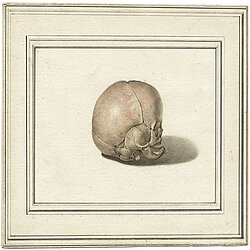Loading the page ...
Adam Friedrich Oeser
1717 Preßburg – 1799 Leipzig
Adam Friedrich Oeser, a painter, draughtsman, etcher and sculptor, received his artistic training in Vienna from Jacob van Schuppen, Daniel Gran and Martin van Mytens the Younger. He was introduced to sculpture by his friend, Raphael Donner, who also advised him to study classical art. From 1739 Oeser was active in Dresden, where he distinguished himself primarily as a decorative painter. His close acquaintance with the archaeologist and art writer, Johann Joachim Winckelmann, who lodged with Oeser from 1754 and received drawing lessons from him, proved to be of momentous import. Winckelmann’s epoch-making essay Gedanken über die Nachahmung der griechischen Werke in der Malerei und Bildhauerkunst (Thoughts on the Imitation of Greek Works in Painting and Sculpture) reflects the discussions on art theory that were held in Oeser’s house. Forced to leave Dresden by the Seven Years War, Oeser ultimately settled in Leipzig in 1759, where he was to live and work until his death. In 1764 he was appointed director of the Academy founded shortly before by Christian Ludwig Hagedorn and simultaneously assigned to the position of painter at the court of the Elector. Oeser became a prolific painter of ceilings and stage scenery in Leipzig. A wellrespected figure in the intellectual and cultural life of the city, he was also influential as a teacher. His most famous pupil was undoubtedly Johann Wolfgang von Goethe, to whom he gave drawing lessons between 1766 and 1768. Oeser later remained on friendly terms with Goethe, visiting him Weimar on several occasions and receiving numerous commissions thanks to his intercession.
Archive
